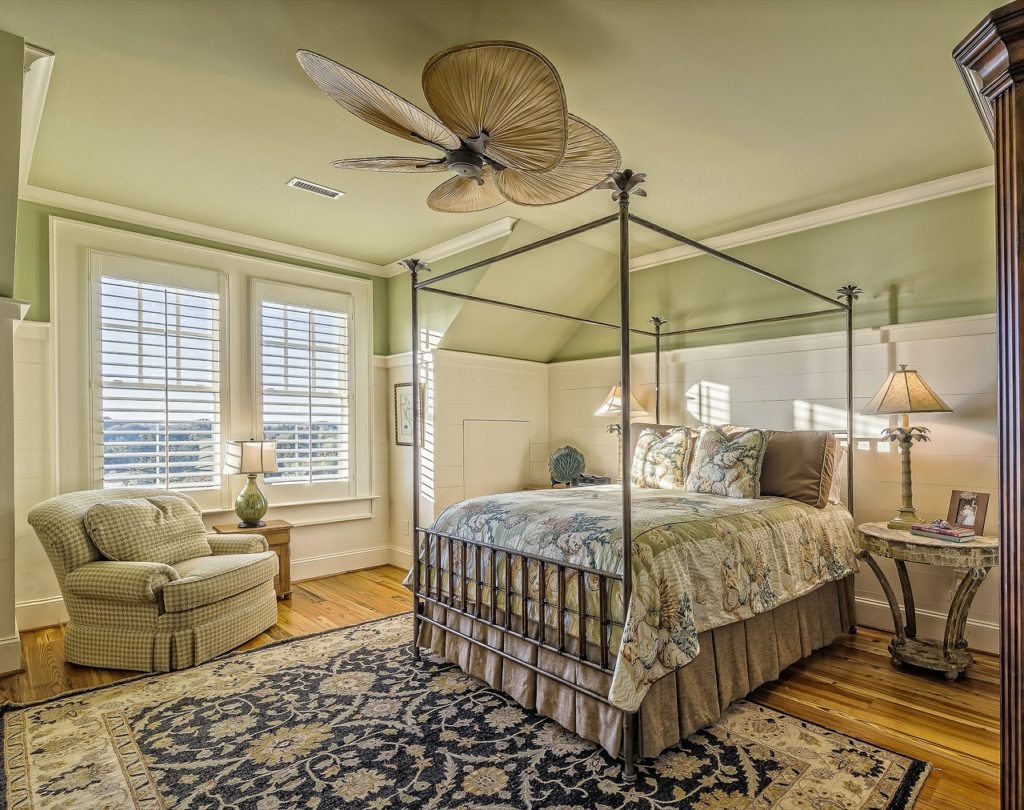
Why You Need a Sleeping Sanctuary
Getting a good night’s sleep is important for the whole family. In adults, sleep is involved in the healing and repairing of your heart and blood vessels. Sleep deprivation in adults has been linked to an increase in heart disease, kidney disease, high blood pressure, diabetes, and stroke.
Although you may struggle to get them out of bed most mornings, sleep is important for your teenager’s current state of growth and development. The average teen needs about nine hours of sleep each night to feel alert and well rested. A good night’s sleep is also critical for younger children’s growth and development.
Unfortunately, there are many factors in play that can prevent all ages groups getting their full recommended hours of sleep each night. Caffeine products, such as coffee and soft drinks, are becoming more present in our diets, and leaving us struggling to fall asleep. We’re frequently going to bed with our electronic devices, and we can stay up later than intended playing games or checking emails. We’re committed to having dinner together as a family, but busy schedules cause us to push dinner back further, thus we’re going to bed stuffed and uncomfortable.
Thankfully, these are situations that are easily resolved with some time management and the implementation of a bedtime routine. However, there could also be external factors preventing us from getting our necessary shut eye. If there are factors in your bedroom that are keeping you awake, these quick bedroom makeovers will help you transform your bedroom into a sanctuary of sleep.
Black-out curtains
Have you ever wondered why bats congregate in caves for their daytime sleep? A quiet, dark, and cool environment is excellent for inducing deep slumber. These days, we are surrounded by cars, streetlights, or even neon signs in the city, which are all powerful indicators that tell the brain it’s time to be awake. By using blackout curtains to block out any residual light from streetlights outside your bedroom window, your are sending signals to your brain that it is time to sleep.
Muffle the noise
As with light from the street sneaking its way into your bedroom, there are many noises that can make it difficult to get some rest. Cars rushing by, clocks chiming every fifteen minutes in big cities, people just getting in from a late night out, or even just noisy neighbors who are staying up late. You may be able to do something about your neighbors, but it’s not so easy to block out the rest of the world. The best solution is to decorate the room with thick, plush rugs and cushions to muffle the worst of the noise. Any residual noise can be turned down with a good pair of earplugs. Sleep experts recommend getting rid of any clocks that tick, beep, or give off light. Instead, try a Progression Clock to gently wake you up every morning.
Check your mattress
You don’t need to be an expert in mattresses to know that a comfortable mattress is essential to a good night’s sleep. But the wrong mattress – or a mattress that’s simply too old – can be the cause of more than that crick in your neck or your low back pain. The lack of sleep caused by a bad mattress can lead to obesity, stress, or even a weak immune system. An older mattress also has a higher chance of being home to dust mites, which can irritate your throat and lungs, and aggravate allergies. If excessive tossing and turning is becoming a regular occurrence, it might be time for a new mattress.
Install a ceiling fan
Have you ever woken up because you’re sweaty and uncomfortable? Experts agree that the optimal temperature for sleep is between 64 and 70 degrees Fahrenheit (18 and 21 Celsius). But don’t kick your partner out of bed just yet. Simply install a ceiling fan to keep your room at the perfect temperature. An added benefit of a ceiling fan is that it’s cheaper to operate than an air conditioner, so you won’t be sacrificing your energy bills for a good night’s sleep. Ceiling fans also create a whispering white noise while they spread the gentle breeze. The two combine to make a lullaby of sorts, which will also help send you off to dreamland.
Try a little Feng Shui
The rest of your house might be painted bright red, but it’s not the best color to promote rest and relaxation in the bedroom. Try painting your sleep sanctuary in soothing colors such as pale blue or lavender. Next, get rid of your clutter by putting it away in drawers or storage. Remember, a clean bedroom is a calm bedroom. Finally, add plants, art, or photos of nature to create an ambiance of serenity. If you have the funds for it, go one step further by adding dimmer switches to recreate that feeling of coziness when your mum tucked you into bed.
Get Rid of Any Stimulations
You may have installed a television in your room, or set up a nook specifically for charging your devices overnight. Maybe you’ve taken up exercising and have installed a treadmill in your room to encourage you to exercise first thing in the morning. Your bedroom should only have two purposes; sleep and intimacy. Get rid of anything that could potentially remind you of anything stressful. Stop using your bedroom as a home office, because it will make you unable to relax once it’s time for you to sleep.
Consider your allergies
While doing all these small renovations, you need to be sure to eliminate any potential allergy triggers, as none of these will be conducive to a good night’s sleep. If you’re installing a ceiling fan, look for a model whose blades are coated with nanoparticles to prevent dust buildup. Upgrading your mattress should remove the greatest source of dust mites in your room, but go further by investing in some hypoallergenic sheets and pillows.
A good night’s sleep is within your grasp. Start working on your sleeping sanctuary today!





